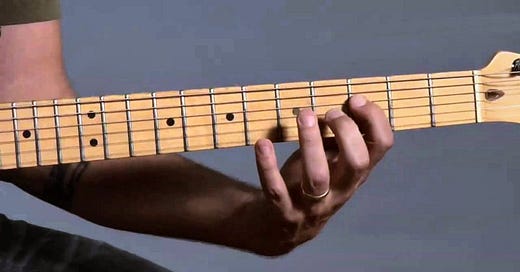Improvisation comes from scales. Chords come from scales. Everything in music comes from scales. Learning how to practice these scales correctly can make a huge difference in the way you play.
Below is the A Major scale.
The numbers are your fingers (1 = Index, 2 = Middle, 3 = Ring, and 4 = Pinky).
The root note in this scale is “A”, located on the 5th fret of string 6, the 7th fret of string 4, and the 5th fret of string 1.
Practice this scale by starting on the “A” on the 6th string using your 2nd finger. Think of this scale shape as a four-fret “box pattern”. Every finger gets used at least one time.
Now, let’s make it a little more interesting.
Going up!
Here we have the exact same A Major scale, only we will be using most of the fretboard instead of just one box pattern.
Notice that the 2nd finger does NOT get used at all in this pattern, as you climb up the fretboard. When you see a number used more than one time on one string, that means that you slide that finger to the next note - so that it puts you into position for the next higher notes going up the scale.
Going back down!
Again, we have the same A Major scale, but this time we will be climbing back down to the low A on the 6th string.
This patterns looks quite different from the previous scale. Notice that the 3rd finger gets used only one time. The 1st finger slides two times on the third string and twice on the fifth string.
Remember to use your metronome when practicing these scales, and above all, when you are playing eight notes, make sure that you are alternating your picking.








